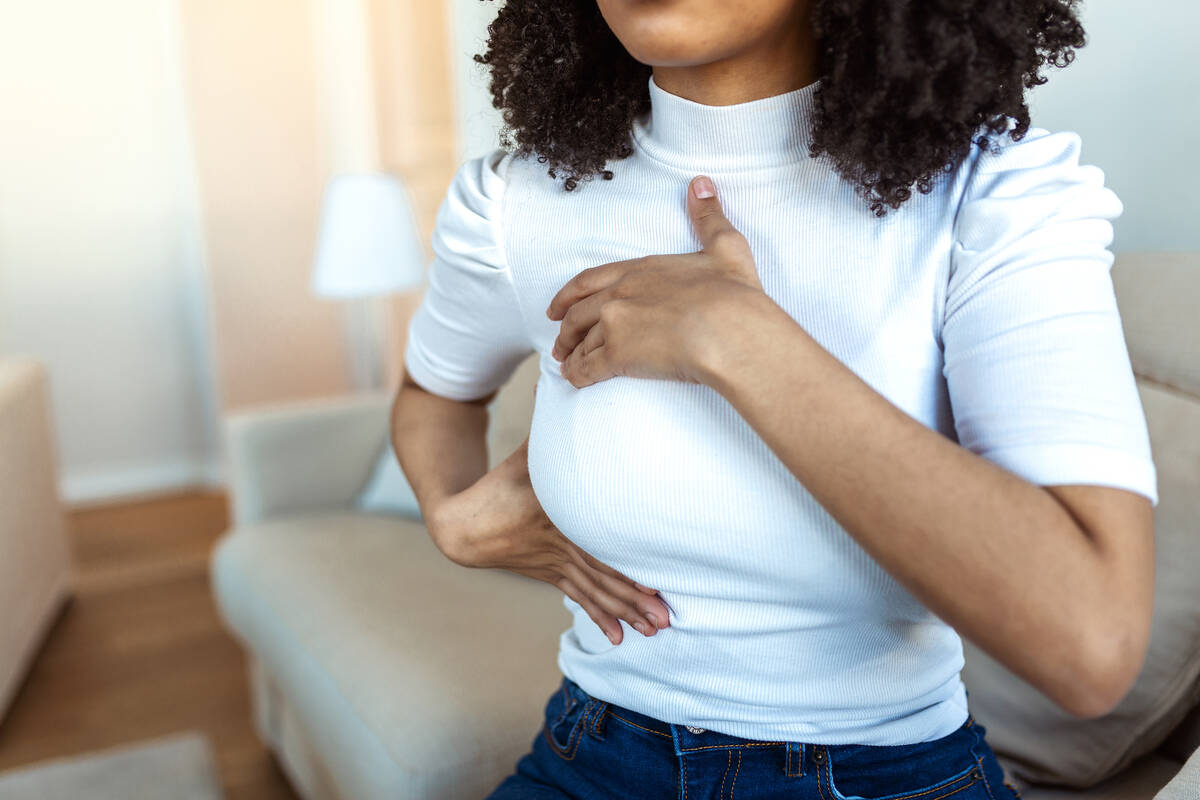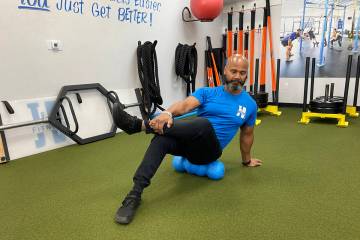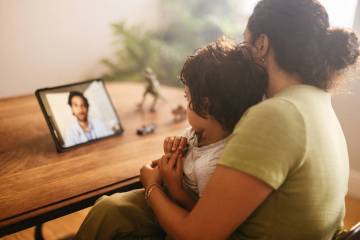Experts explain when pain can be a sign of breast cancer
Breast cancer is the most common cancer in women besides skin cancer. According to the American Cancer Society, the disease accounts for about 30 percent of new cancers diagnosed yearly in women.
Although it’s the second-leading cause of cancer-related death in women, early detection truly saves lives. The relative five-year survival rate is 99 percent when the disease is caught at the localized stage, the American Cancer Society reports.
“Breast cancer is very treatable and has excellent outcomes if you catch it early,” says Dr. Sylvia A. Reyes, a breast surgical oncologist and director of breast services diversity, equity and inclusion at Northwell Health Cancer Institute. “To catch it early, you need to know what those signs are.”
Breast pain isn’t typically discussed as an early sign of breast cancer, and there’s a reason for that. “Breast pain is a rare symptom,” says Dr. Amy Bremner, a breast surgical oncologist and medical director of breast surgical oncology at MemorialCare Saddleback Medical Center in Laguna Hills, California.
However, there are instances when breast pain may be a sign of breast cancer. Experts explained when to take urgent action, other more common signs of breast cancer and how to lower your risk.
Common causes of breast pain
Bremner stresses that breast pain is common in women and often symptomatic of something else. Common causes of breast pain unrelated to cancer include:
Menstrual cycle: Breast pain is often cycle-related, explains Dr. Richard Reitherman, a board-certified radiologist and medical director of breast imaging at MemorialCare Breast Center at Orange Coast Medical Center in Fountain Valley, California. The American College of Obstetricians and Gynecologists also says that hormonal changes the week before a period can cause breast pain and tenderness.
Birth control or hormone therapy: Taking hormonal birth control or therapy during menopause can also result in breast pain, the American College of Obstetricians and Gynecologists notes.
Mastitis: This is a breast infection that occurs in lactating people, Reyes says. Pain is a common symptom.
Breastfeeding: Around three to five days postpartum, milk transitions from colostrum to transitional milk. Since the baby hasn’t regulated a lactating parent’s supply by demanding it, the excess milk may cause engorgement, according to the Cleveland Clinic. And this can continue to happen off and on for as long as a person breastfeeds.
When to take action
It’s not possible to flag a single type of feeling in the breasts as a cancer sign. “There is not a specific type of breast pain that’s going to differentiate cancer from noncancer,” Reyes says. However, experts say that focal, persistent pain associated with a mass but not another likely culprit, such as an incoming period, could be related to breast cancer. Here’s what they mean by that.
Focal: Breast cancer-related pain is in a specific place — differentiating it from hormonally driven discomfort. “When you get your period, your breasts are sensitive all over,” Reyes says. Ditto for pregnancy.
It’s been more than a week: If you’re unsure, you should always feel comfortable calling a doctor. However, since breast pain is cycle-driven, Reyes says it’s typically OK to monitor it for a few days to a week, explaining: “We can have breast pain from so many other things, but those usually go away or get better.”
Mass: The focal pain may be in a spot that is experiencing other changes. “If (pain is) associated with an actual hard lump or skin thickening, you should take urgent action,” Reitherman says. “The action should include consultation with your health care provider and appropriate radiologic imaging such as mammography or ultrasound.”
More common signs
Breast cancer doesn’t always have signs. “Most breast cancers are detected through mammography, and the patient has no symptoms,” Bremner says. Still, she says, people should look out for telltale signs that are far more common than breast pain, including: a mass in the underarm region; breast skin changes like redness, skin thickening and dimpling; and nipple discharge.
How to protect yourself
While early detection is crucial, there are also changes you can make to help protect yourself from developing breast cancer.
Know your risk: Experts share it’s essential to know the risk factors for breast cancer — especially because it will inform health care decisions.
“The age at which a woman should begin regular, yearly mammograms is based on her personal risk,” Reitherman says.
Most women at an “average risk” will start mammograms at 40. However, Reitherman says factors that increase risk and require more frequent mammograms include:
— A first or second-degree relative on the maternal or paternal side who had breast or ovarian cancer.
— A relative who tested positive for a breast cancer mutation such as BRCA, PALB2, ATM, P53, PTEN or CHECK2 via genetic testing.
— Abnormal breast biopsy that showed a diagnosis of atypia or lobular carcinoma in situ.
— A history of lymphoma as a child or adolescent that included chest radiation.
A health care provider can use up-to-date guidelines to advise you on mammogram frequency based on your risk factors.
Perform self-exams: Mammograms are important, but self-exams can help people flag concerns with their providers before their scheduled appointments.
“Self-examination increases your awareness of breast health and allows you to detect interval changes in your breasts, which may signal early breast cancer,” Reitherman says. “Your job is not to figure out for yourself if you have cancer or not.” Leave that to your doctor, and give them a call if anything seems different, he says.
Maintain a healthy lifestyle: Reyes knows this advice is so common it almost feels trite. “But it’s true,” she explains.
She says that the lifestyle habits that can help reduce breast cancer include: eating a nutritious diet that includes leafy greens; getting a good night’s sleep; regular exercise; and avoiding excess drinking.




























